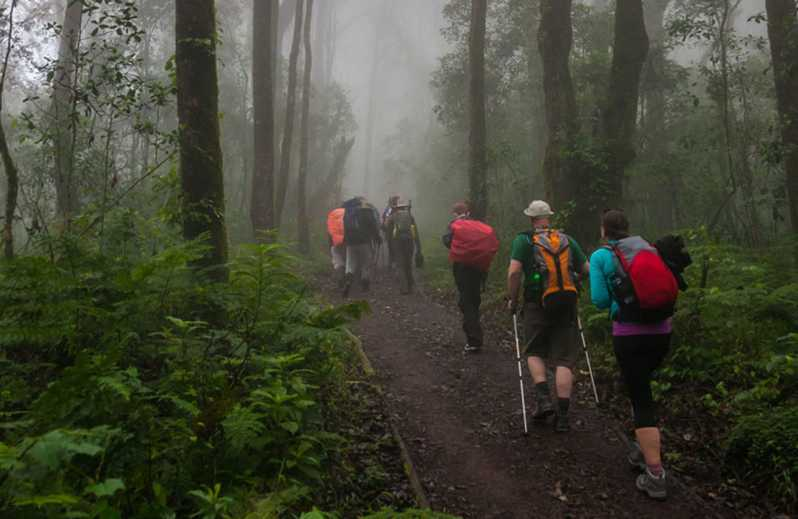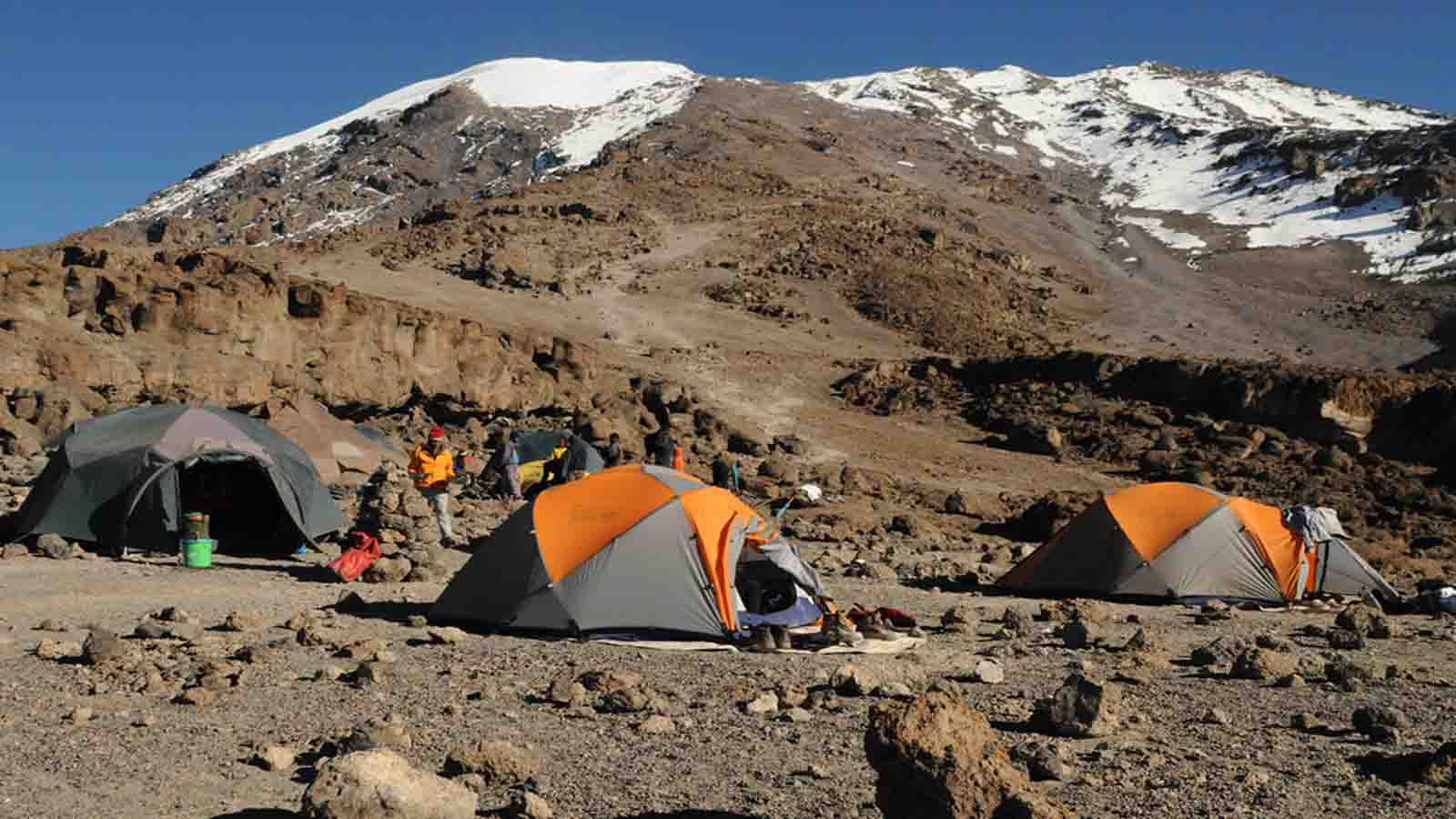Kilimanjaro National Park is a Tanzanian national park, located 300 kilometres south of the equator and in Kilimanjaro Region, Tanzania. The park is located near the region of Moshi. The park includes the whole of Mount Kilimanjaro above the tree line and the surrounding montane forest belt above 1,820 metres.
It covers an area of 1,688 square kilometres, 2°50' - 3°10'S latitude, 37°10' - 37°40'E longitude. The park is administered by the Tanzania National Parks Authority (TANAPA). It was established as a national park in 1973.
The park generated US$51 million in revenue in 2013, the second-most of any Tanzanian national park, and was one of only two Tanzanian national parks to generate a surplus during the 2012-13 budget year. (The Ngorongoro Conservation Area, which includes the heavily visited Ngorongoro Crater, is not a national park.)
 |
| Ngorongoro Conservation Area |
TNPA has reported that the park recorded 58,460 tourists during the 2012-13 budget year, of whom 54,584 were foreigners. Of the park's 57,456 tourists during the 2011-12 budget year, 16,425 hiked the mountain, which was well below the capacity of 28,470 as specified in the park's General Management Plan.
 |
| The entrance to Kilimanjaro national park. |
History
In the early twentieth century, Mount Kilimanjaro and the adjacent forests were declared a game reserve by the German colonial government. In 1921, it was designated a forest reserve. In 1973, the mountain above the tree line about 2,700 metres was reclassified as a national park. The park was declared a World Heritage Site by the United Nations Educational, Scientific and Cultural Organization in 1987. In 2005, the park was expanded to include the entire montane forest, which had been part of the Kilimanjaro Forest Reserve.
Brief synthesis
Kilimanjaro National Park covering an area of some 75,575 ha protects the largest free standing volcanic mass in the world and the highest mountain in Africa, rising 4877m above surrounding plains to 5895m at its peak. With its snow-capped peak, the Kilimanjaro is a superlative natural phenomenon, standing in isolation above the surrounding plains overlooking the savannah.
 |
| Mount Kilimanjaro |
Criterion vii: Mount Kilimanjaro is one of the largest volcanoes in the world. It has three main volcanic peaks, Kibo, Mawenzi, and Shira. With its snow-capped peak and glaciers, it is the highest mountain in Africa. The mountain has five main vegetation zones from the lowest to the highest point: Lower slopes, montane forest, heath and moorland, alpine desert and summit.
The whole mountain including the montane forest belt is very rich in species, in particular mammals, many of them endangered species. For this combination of features but mostly its height, its physical form and snow cap and its isolation above the surrounding plains, Mount Kilimanjaro is considered an outstanding example of a superlative natural phenomenon.
Integrity
Kilimanjaro National Park, established in 1973, initially comprised the whole of the mountain above the tree line and six forest corridors stretching down through the montane forest belt. At the time of inscription in 1987, the main pressures affected mostly the forest reserve which acted as a buffer zone to the park. The World Heritage Committee recommended extending the national park to include more areas of montane forest.
Following a 2005 extension, the National Park includes the whole of the mountain above the tree line as well as the natural forest (montane forest) which was under Kilimanjaro Forest Reserve, and as such fulfils the criteria of integrity. It is important that the extension of the National Park be reflected in the boundaries of the property.
The wildlife of the property is important to the experience of Kilimanjaro, although the property is not inscribed in relation to biodiversity criteria. Pressures on elephant, buffalo and antelope, and logging in the Forest Reserve area, were noted as integrity concerns at the time of inscription. The park is connected to Amboseli National Park, however corridors to Arusha National Park and Tsavo National park have been encroached, impacting on wildlife migration.
Protection and management requirements
Kilimanjaro National Park is protected under national legislation as a National Park and a management plan is in place. The property requires an effective and managing organization, including sufficient well equipped ranger presence to be able to carry out surveillance and implementation of the management plan. A key management issue is maintaining the aesthetic quality of the property as a spectacular natural site.
Protecting its visual integrity and sustaining its natural integrity are key management issues. Key viewpoints to the property also need to be protected, including from Arusha and Amboseli where the most famous views of the property can be seen. An effective programme of research and monitoring of the property is also required.
Threats to the property include increasing and cumulative stress from sources such as adjacent land uses, downstream effects of air and water pollution, invasive species, fire and climate change. The glaciers of the property are vulnerable to retreat, and are cited as a feature of particular vulnerability to global climate change. The impacts from these threats need to be closely monitored and minimized.
Tourism poses a significant threat and careful planning of related infrastructure and access development is required. Human pressure on the property needs to be managed, which can result otherwise in illegal harvest of its resources, encroachments to park boundary and blockage of migratory routes and dispersal areas. Education programmes and integration of park management with all involved partners and stakeholders, including the surrounding rural population, is essential.

Flora
The vegetation on the mountain is also very varied and some 2,500 species of plants are found here including the endemic and beautiful red and yellow impatiens kilimanjari as well as the colorful violet viola. The lower regions of the park are dominated by lush green montane forests with almost 140 species of trees. A bit higher up, distinctive giant lobelias grace the moorland zone.
Higher still lies the moorland zone, where a cover of giant heather is studded with otherworldly giant lobelias. Above 4,000m, a surreal alpine desert supports little life other than a few hardy mosses and lichen. Then, finally, the last vestigial vegetation gives way to a winter wonderland of ice and snow - and the magnificent beauty of the roof of the continent.
Fauna
A variety of animals can be found in the park. Above the timberline, the Kilimanjaro tree hyrax, the grey duiker, and rodents are frequently encountered. The bushbuck and red duiker appear above the timberline in places. Cape buffaloes are found in the montane forest and occasionally in the moorland and grassland. Elephants can be found between the Namwai and Tarakia rivers and sometimes occur at higher elevations. In the montane forests, blue monkeys, eastern black and white colobuses, bushbabies, and leopards can be found.
Out of the approximately 140 mammal species that live in the park, 87 of them are forest species. Animals that roam here include elephants, leopards, buffaloes, varies antelopes including the rare and endangered abbot duiker as well as primates such as the colobus and the mitis monkey. In addition hereto, 24 species of bats and 179 highland bird species have also been spotted in the Kilimanjaro National Park.




















No comments:
Post a Comment